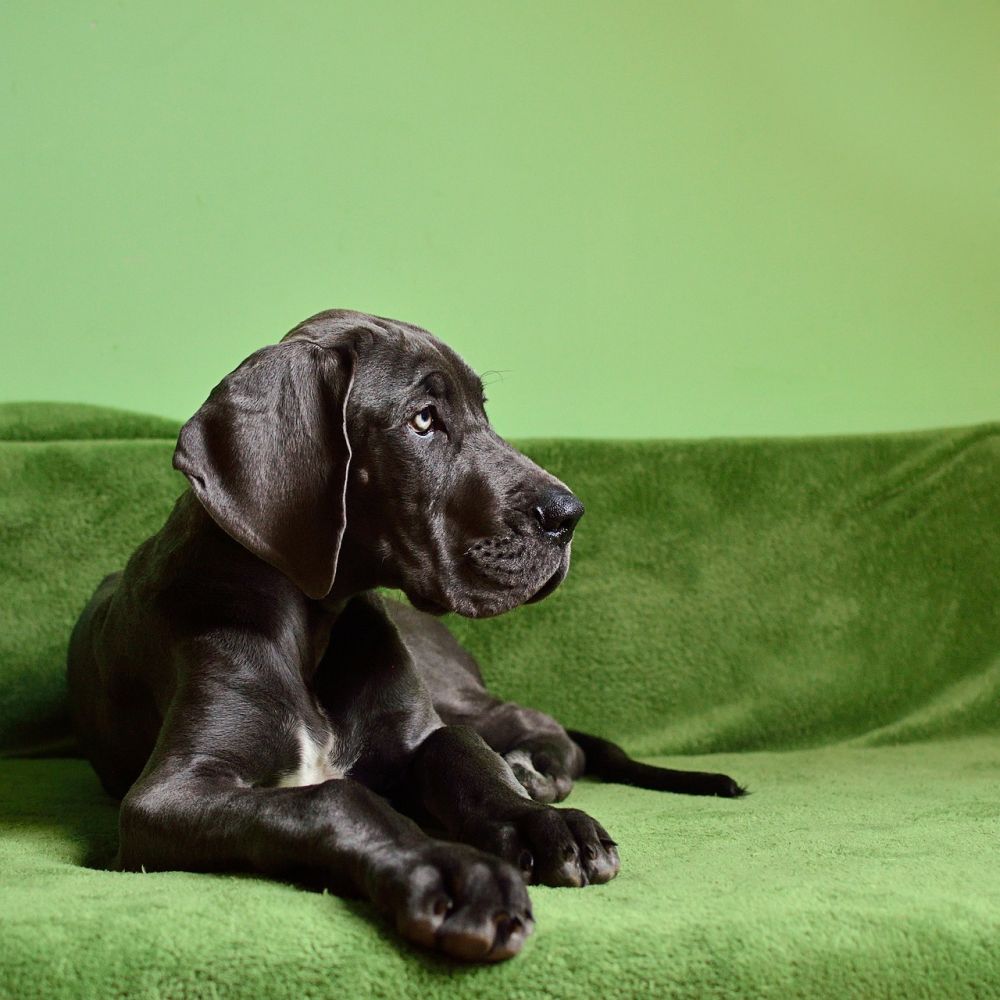
Dog Breed Guide: Great Dane
Are you looking for an enormous lapdog? If you are, then the Great Dane may well be the breed for you. They’re the biggest breed that I have personally ever had to try to squeeze into my lap, and since it happened on more than one occasion with more than one dog, it’s definitely a breed thing!
Great Danes certainly are great – they’re enormous, of course, but they’re also gentle, fairly placid, and a great family dog. If they’re a second pet, they’ll get along with other animals, but they’re not great with new arrivals or strange animals. But their grooming needs are minimal, and despite their size, they don’t need excessive amounts of exercise, so if you have the space, they’re a good choice.
History of the Great Dane
Great Danes have been around for a very long time. In fact, they’re mentioned as early as the 14th Century!
What might surprise you, given their name, is that they’re not from Denmark at all. Rather, these gentle giants originated in Germany, and they used to be known as German Boarhounds. For a while, in the late 1800s, they were even known as the national dog of Germany!
Around the same time, the breed made its way across the Atlantic to America, and so began our love affair with this colossal softy. Since then, not only is the Great Dane a fixture on the most popular breeds list, but they’ve also won the World’s Tallest Dog record on several occasions.
General Physical Characteristics of Great Danes
Great Danes are very, very large. In fact, weighing in between 130 and 150 lbs., there’s a chance that they will outweigh not one but several of your family members.
They’re tall, too, even when they’re not breaking records, and you can expect them to measure at least 28 to 35 inches at the shoulder. So, they might well be taller than your kids for a while!
Great Danes are known for their square jaws, and they usually have floppy ears, although there are some who choose to crop them. This is not necessary, however, and is cruel. Unless it’s for a valid reason (regular hematomas, for instance), this should never be a consideration, in our opinion.
Great Danes come in many colors, including brindle, tan, black, and harlequin (black and white), as well as blue merle. Sometimes, puppies are born that are blue merle harlequin, and while this is beautiful, it’s generally not accepted in show dogs.
They are well-muscled dogs with short coats that are very easy to care for, and they are exceptionally strong.
Temperament and Character of Great Danes
Great Danes are great in temperament as well as name.
While they are certainly intimidating and can be an excellent deterrent to intruders, they are generally gentle and even-tempered. Younger dogs can be boisterous, and you may find it tricky to have them around small children, but they do tend to get along great with kids, which makes them a great family dog choice.
Great Danes are generally accepting of other pets, whether dogs or cats, and they are relatively easy to train. It’s very important to socialize them, though, and remember that, especially while they are young, they can cause massive destruction when left alone and unsupervised! I personally remember an eight-month-old Great Dane who pulled out their owner’s entire buried sprinkler system in an afternoon because they were bored!
Lifespan of the Great Dane
The worst part about sharing your life with a Great Dane is their lifespan, which is only between 7 and 10 years.
Common Health and Personality Issues in Great Danes
Great Danes are reasonably healthy dogs, albeit with a relatively short life span, but there are a few problems that are common in the breed:
- Like all large, deep-chested dogs, gastric torsion or bloat is always a concern.
- Cardiomyopathy, or an enlarged heart due to defects.
- Osteosarcoma is a malignant form of bone cancer that is common in giant breeds like the Great Dane.
- The breed is more prone than normal to Von Willebrand’s disease.
- Hypothyroidism, or underactive thyroid.
- As with most large breeds, hip dysplasia is a concern.
One of the best ways to predict the health of your Great Dane is to find out about their parents and grandparents. Great Dane colors tend to be bred separately, so there can be different health concerns that are specific to a particular bloodline.
Despite their size, Danes don’t really need a lot of exercise, and a walk every day should do it. Make sure that both dog and walker are well trained, however, because dealing with a dog with this much power can be a bit much for the uninitiated!
